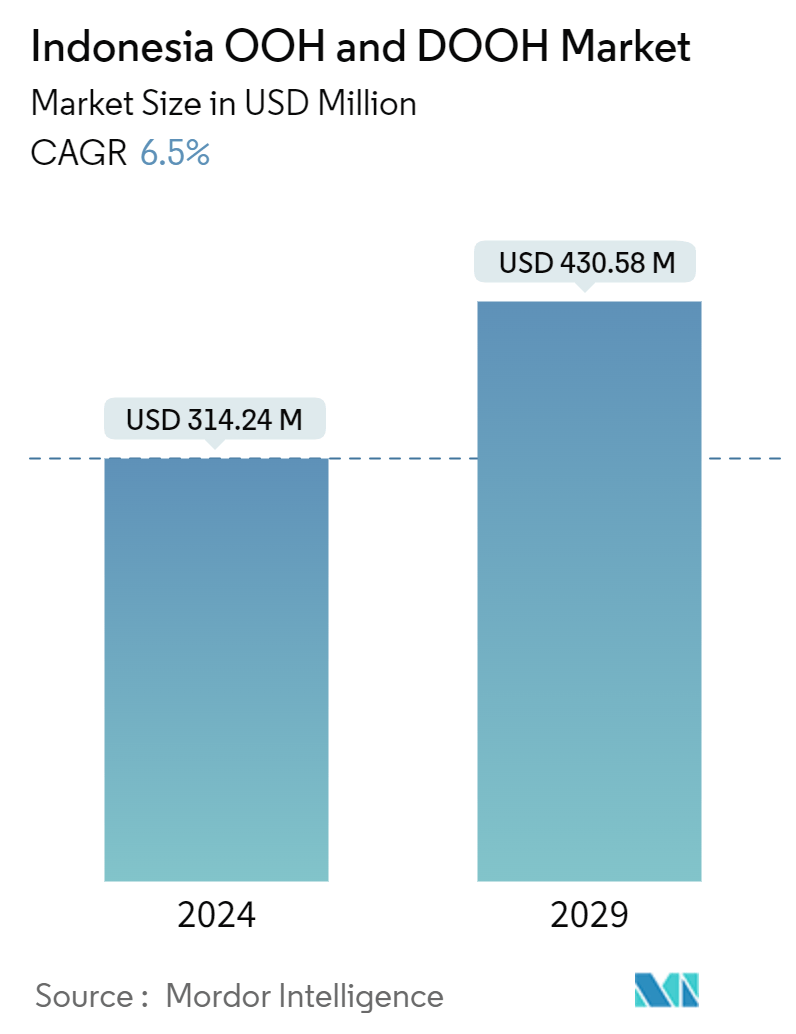Market Size of Indonesia OOH And DOOH Industry

| Study Period | 2019 - 2029 |
| Base Year For Estimation | 2023 |
| Market Size (2024) | USD 314.24 Million |
| Market Size (2029) | USD 430.58 Million |
| CAGR (2024 - 2029) | 6.50 % |
| Market Concentration | Low |
Major Players
*Disclaimer: Major Players sorted in no particular order |
Indonesia OOH and DOOH Market Analysis
The Indonesia OOH And DOOH Market size is estimated at USD 314.24 million in 2024, and is expected to reach USD 430.58 million by 2029, growing at a CAGR of 6.5% during the forecast period (2024-2029).
- Rapid technological advancements and changing consumer behaviors are reshaping the digital out-of-home landscape in Indonesia. This transformation is set to bring a rise in interactive campaigns, deepening the connection between brands and their target audiences.
- The DOOH industry in Indonesia is witnessing a rapid transition toward digitalization. Digital billboards have become much more widespread in and outside of Indonesia. Combined with modern advertising technology, these dynamic displays have the same broad reach as traditional billboards but with the added advantage of providing deeper analytics capabilities.
- Digital out-of-home (DOOH) advertising is strategically placed for its ease of management, swift adaptability, cost-effectiveness, and precise market targeting. Advertisers utilize DOOH to distribute diverse information across networked devices, updating content remotely. This form of advertising allows for real-time adjustments and targeted messaging, making it a versatile tool in modern marketing strategies.
- In Jakarta, major OOH advertising locations include malls, commuter lines, airports, online taxis, MRTs, LRTs, and billboards in both commercial and suburban areas. Due to Jakarta's severe traffic congestion, advertising on online taxis, buses, and billboards has become highly popular.
- Quantifying user engagement with DOOH poses a challenge due to the inherent difficulty in pinpointing precise DOOH impressions. Although vendors leverage smartphone location data to estimate foot traffic around outdoor ads, this method lacks precision. Moreover, this approach falls short of incorporating facial recognition technology to determine the demographics of those exposed to the ads. This omission not only complicates implementation but also acts as an obstacle to the market's expansion.

